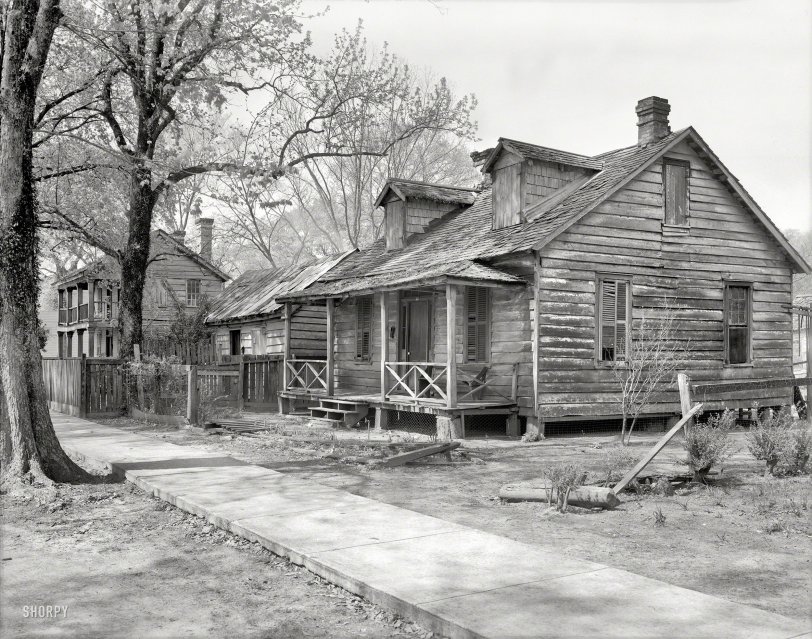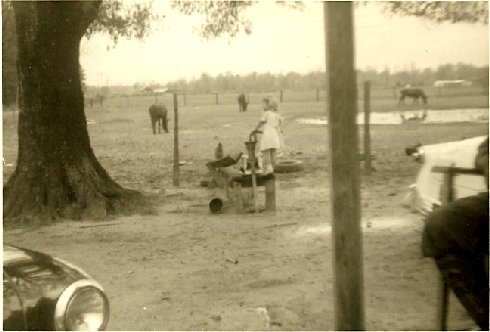


Framed or unframed, desk size to sofa size, printed by us in Arizona and Alabama since 2007. Explore now.
Shorpy is funded by you. Patreon contributors get an ad-free experience.
Learn more.

- Ticket Retention
- Killed by Amtrak
- Back to the Future
- Heckuva remote control!
- Sometimes — Things Go Bump!
- I SEE THE LIGHT
- Union Switch and Signal Company
- Get That Light Out Of My Eyes
- Eggs. Eggs. Eggs. The Egg Man is Here!
- Foreboding caption
- Famous Hollywood faces
- Not just S&P
- re: Those things in the jar
- Up In Smoke
- Medical Smoking
- Quick fix
- A Quink Comment
- If You’re Like Me, Never
- Delivering the News
- U.S.A.
- S&P
- 1940 Zenith radio model 6G601
- Quality goes in before the name goes on!
- Snazzy skirt
- Carbon Arc Lamps
- Illuminate us
- I remember it well
- I can't prove it
- Complicated then, forgotten now
- Bryan-Stevenson
Print Emporium
Mansfield Quarters: 1936

1936. "Georgetown County, South Carolina. Mansfield Quarters, Georgetown." 8x10 inch acetate negative by Frances Benjamin Johnston. View full size.
The Poverty of the South
I was born in Georgetown, SC in the mid 50's. I've mentioned earlier that these homes might be located at the Mansfield Plantation, but the sidewalks and water faucets make me think otherwise. Looks to be more within the city limits.
I think many people do not understand the true face poverty. I saw many homes just like these that were being occupied into the late 1960's. The yards were daily swept clean of all grass with a broom made from local bushes, the dirt packed down tightly. No grass was considered a well kept yard.
My mother was born in 1935 and she did not see running water until the early 50's. Wood stoves were still in use for cooking and heating. She gave me a quick rundown of the weekly routine. Below are a few of the highlights that I recall offhand.
Baths in tubs or showers were nonexistent... you used a wash bowl and a wash cloth to wash, rinse with a damp cloth and dry the area, then move to the next section of your body until you finished head to toe.
If you were out of the city limits, you'd have a hand pumped well on the back porch and a bucket... no running water.
Mondays were laundry day... an all day chore, consisting of 3 large wash tubs, one of which was cast iron with a fire under it. Clothes went from the soapy boiling water to the other two wash tubs for scrubbing on a wash board and rinse, and a 4th wash tub with starch if required.
Tuesdays were ironing day... All the clothes washed the previous day, as well as the pillow cases and sheets were ironed. The iron was heated on the wood burning kitchen stove. Another all day chore.
Wednesday was clean the outhouse day. Broom was used to clear out all spiders and webs, and bleach was used to clean the stool and seat. This job was relegated to my mother.
Thursdays were clean the hardwood floors day. No mops... bucket with wash rags on hands and knees.
Food was prepared on Saturdays for Sunday, as Sundays were reserved for Church (morning and night services) and some much needed down time in between and afterwards.
During all this time food was prepared on the cast iron wood stove, Food stored in an icebox (that drained through a hole in the floor). Garden and chickens had to be tended to, and there was usually one hog in the pen.
Living was a full-time job... not much time for leisure. It was a very hard life... and those buildings show it.
I've long since left the area, but when I return to visit I remember many of the hardships my family endured. I didn't see the wash days or the cast iron stoves, but the outhouses, wood chopping piles, and wood burning stoves in each room were still common. So was the dirt yards, gardens, chickens, and hogs, and a hunting dog or two.
The difference between Georgetown, SC and Miami, FL (where I spent much of my childhood) in the early 60's was like moving through a time machine back and forth 30 years into the future.
The included picture shows the reality of life in Georgetown in the mid to late 1950's. The young girl is a near relative of my age.
We take so much convenience for granted...

Slave Quarters
Boo Radley's House
I dare you to knock on the door.
Crisp new concrete sidewalks
It's only 1936, and they're already going all Colonial Williamsburg on us.
I've got questions
Did they rent these out? Were they for migrant or seasonal workers? Or were they for sale at the time, when apparently no funds were available for any kind of paint?
The chicken wire newly added around the foundation hints at finally controlling critters. Plus the thin sidewalk seems new, too.
Looks like lots of work spiffing up a very drab residence of sorts.
























On Shorpy:
Today’s Top 5